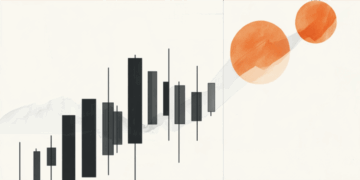- Australian Dollar rebounds after Thursday’s sell-off triggered by weak jobs data.
- A softer US Dollar and falling Treasury yields ease pressure on the Aussie.
- US Michigan Consumer Sentiment beats expectations but fails to lift the Greenback.
The Australian Dollar (AUD) is recovering lost ground on Friday after a sharp sell-off on Thursday, which was fueled by weaker-than-expected jobs data. The rebound is supported by a softer US Dollar and a rise in Australia’s 10-year government bond yield, which is easing pressure on the Aussie. Market sentiment remains cautious, however, as expectations grow for a potential interest rate cut by the Reserve Bank of Australia (RBA) at its August meeting.
The AUD/USD is holding steady during Friday’s American session, clinging to its intraday gains and trading near Thursday’s high around 0.6527. The upside is further fueled by a sharp rebound in iron ore prices, as renewed optimism over additional economic support from China has boosted demand for the commodity-linked Aussie.
Meanwhile, the US Dollar Index (DXY), which tracks the value of the Greenback against a basket of six major currencies, remains under pressure near 98.25, erasing most of its weekly gains. Despite a solid Michigan Consumer Sentiment report, the DXY is holding losses as the data lacked the punch to revive bullish momentum.
The University of Michigan’s preliminary Consumer Sentiment Index for July rose to 61.8 from 60.7 in June, beating expectations of 61.5.
Despite the modest uptick in US consumer sentiment, markets remain more focused on the uncertainty surrounding the Federal Reserve’s (Fed) next move. Diverging views from Fed officials have clouded the policy outlook, leading to a dip in US Treasury yields. The softer yields are weighing on the US Dollar and giving the Australian Dollar some breathing room amid an otherwise cautious trading environment.
The RBA held its benchmark rate steady at 3.85% during its July meeting, but fresh data released this week has only strengthened the case for a rate cut in August. The June employment report showed a surprising jump in the Unemployment Rate to 4.3%, the highest level in over three years, while Employment change increased by just 2K, well below the expected 20K gain.
Markets are now fully pricing in a 25-basis-point cut in August, with some speculation building around a potential follow-up move later this year.
RBA FAQs
The Reserve Bank of Australia (RBA) sets interest rates and manages monetary policy for Australia. Decisions are made by a board of governors at 11 meetings a year and ad hoc emergency meetings as required. The RBA’s primary mandate is to maintain price stability, which means an inflation rate of 2-3%, but also “..to contribute to the stability of the currency, full employment, and the economic prosperity and welfare of the Australian people.” Its main tool for achieving this is by raising or lowering interest rates. Relatively high interest rates will strengthen the Australian Dollar (AUD) and vice versa. Other RBA tools include quantitative easing and tightening.
While inflation had always traditionally been thought of as a negative factor for currencies since it lowers the value of money in general, the opposite has actually been the case in modern times with the relaxation of cross-border capital controls. Moderately higher inflation now tends to lead central banks to put up their interest rates, which in turn has the effect of attracting more capital inflows from global investors seeking a lucrative place to keep their money. This increases demand for the local currency, which in the case of Australia is the Aussie Dollar.
Macroeconomic data gauges the health of an economy and can have an impact on the value of its currency. Investors prefer to invest their capital in economies that are safe and growing rather than precarious and shrinking. Greater capital inflows increase the aggregate demand and value of the domestic currency. Classic indicators, such as GDP, Manufacturing and Services PMIs, employment, and consumer sentiment surveys can influence AUD. A strong economy may encourage the Reserve Bank of Australia to put up interest rates, also supporting AUD.
Quantitative Easing (QE) is a tool used in extreme situations when lowering interest rates is not enough to restore the flow of credit in the economy. QE is the process by which the Reserve Bank of Australia (RBA) prints Australian Dollars (AUD) for the purpose of buying assets – usually government or corporate bonds – from financial institutions, thereby providing them with much-needed liquidity. QE usually results in a weaker AUD.
Quantitative tightening (QT) is the reverse of QE. It is undertaken after QE when an economic recovery is underway and inflation starts rising. Whilst in QE the Reserve Bank of Australia (RBA) purchases government and corporate bonds from financial institutions to provide them with liquidity, in QT the RBA stops buying more assets, and stops reinvesting the principal maturing on the bonds it already holds. It would be positive (or bullish) for the Australian Dollar.
Read the full article here







